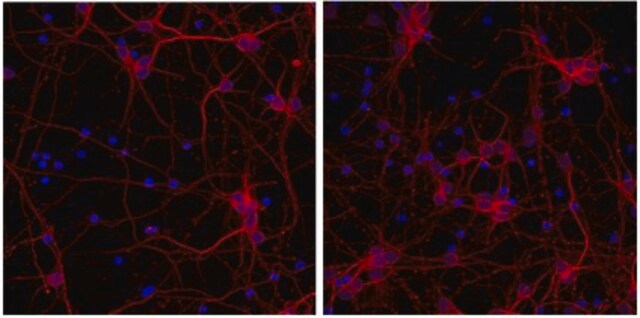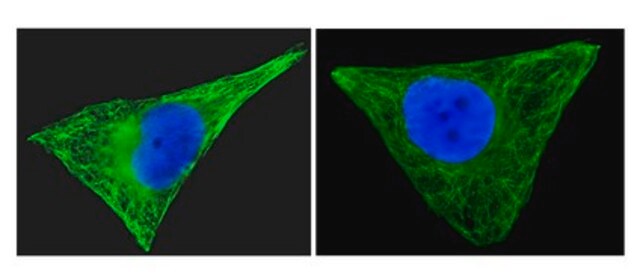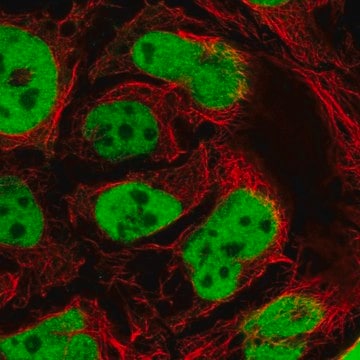CBL412X
Anti-Tubulin β-III Antibody, clone TU-20, Alexa Fluor™488 Conjugated
clone TU-20, from mouse, ALEXA FLUOR™ 488
Synonym(s):
Tubulin beta-4, Tubulin beta-III, tubulin, beta 3, tubulin, beta 4
About This Item
Recommended Products
biological source
mouse
Quality Level
conjugate
ALEXA FLUOR™ 488
antibody form
purified immunoglobulin
antibody product type
primary antibodies
clone
TU-20, monoclonal
species reactivity
human, mouse, pig, bovine, primate, rat
technique(s)
immunocytochemistry: suitable
immunofluorescence: suitable
immunohistochemistry: suitable
immunoprecipitation (IP): suitable
western blot: suitable
isotype
IgG1
NCBI accession no.
UniProt accession no.
shipped in
wet ice
target post-translational modification
unmodified
Gene Information
human ... TUBB3(10381)
General description
Specificity
Immunogen
Application
Although this conjugated antibody will work for Western blotting and Immunoprecipitation, we recommend catalog number CBL412 if these are your primary applications.
Optimal working concentration must be determined by end user.
Neuroscience
Neurofilament & Neuron Metabolism
Quality
Immunocytochemical Analysis: 1:250 dilution of this lot detected β-III tubulin in rat cortex cell culture.
Target description
Physical form
Storage and Stability
Analysis Note
Rat Cortex Cells.
Other Notes
Legal Information
Disclaimer
Not finding the right product?
Try our Product Selector Tool.
Storage Class
12 - Non Combustible Liquids
wgk_germany
WGK 2
flash_point_f
Not applicable
flash_point_c
Not applicable
Certificates of Analysis (COA)
Search for Certificates of Analysis (COA) by entering the products Lot/Batch Number. Lot and Batch Numbers can be found on a product’s label following the words ‘Lot’ or ‘Batch’.
Already Own This Product?
Find documentation for the products that you have recently purchased in the Document Library.
Our team of scientists has experience in all areas of research including Life Science, Material Science, Chemical Synthesis, Chromatography, Analytical and many others.
Contact Technical Service








